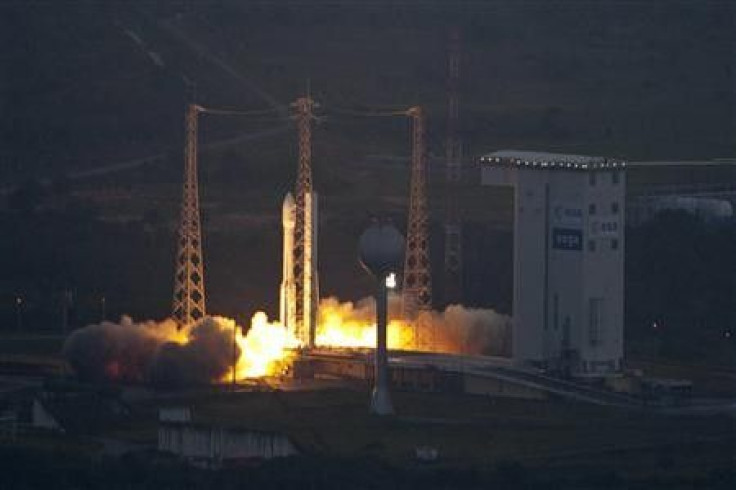U.S. Eyes Growing Global Cooperation on Satellites

(Reuters) - The United States, in a review of future satellite needs, is examining opportunities to increase international collaboration and orders from commercial providers, a senior U.S. Air Force official said on Wednesday.
Richard McKinney, deputy undersecretary for space programs, said separate reviews are under way for four current satellite systems that warn military commanders of enemy missile launches, provide secure military communications, track what is going on in outer space, and monitor weather on Earth.
He said the reviews should be completed this spring to help inform budget decisions for the fiscal 2014 year. The Pentagon is looking at how to improve the resiliency of current systems, increase international collaboration, and in the case of military communications, the role of commercial providers.
The U.S. military is committed to increasing international collaboration on space programs, McKinney told reporters at a conference hosted by Aviation Week. "In the era of more constrained budgets, we're going to take a look at how we can leverage each other's capabilities," he said.
Under a recent Air Force agreement with five countries, McKinney said, the countries will pay for a ninth Wideband Global Satellite (WGS) satellite built by Boeing Co.N> and join Australia in using services provided by the new satellite. He said that deal was in line with a new national space policy released in 2010 that called for enhanced international cooperation.
He said current U.S. satellites already relied on some components from international suppliers.
The Pentagon's fiscal 2013 budget proposed cutting spending on space programs by 22 percent to around $8 billion, but McKinney told the Aviation Week conference that the U.S. military is committed to continued investment in the area.
Budget documents attributed the cut to reduced procurement plans for satellites and launch vehicles, along with the congressionally mandated cancellation of the Defense Weather Satellite System (DWSS), built by Northrop Grumman Corp.
The Air Force halted work on the DWSS program on January 17.
McKinney said the budget cut reflected the "huge amount of money" that had been spent in recent years to replace aging satellites and did not point to any lack of commitment to space programs. In fact, he said, U.S. satellite programs are now as healthy as they had ever been.
"I believe we are still moving forward on space; we are still buying satellites," he told the conference.
The budget includes $1.27 billion for two new satellites in the GPS 3 satellite navigation system; $950 for two more Space Based Infrared System missile warning satellites built by Lockheed Martin Corp; and $786 million for two more Advanced Extremely High Frequency satellites built by Lockheed.
Congress had allocated $125 million in fiscal 2012 for work on a follow-on system for the cancelled weather satellite. McKinney said it was not yet clear how that money would be used.
He said money is clearly tighter than before, and the U.S. military is looking more comprehensively at cross-domain issues, or how space assets worked together with other military programs, and how space-based capabilities could be replaced by other assets if satellite service were interrupted.
McKinney said the fiscal 2013 budget included funding to refurbish two legacy Defense Meteorological Satellite Program (DMSP) weather satellites that have been in storage for several years but would be launched in coming years.
He said launching those satellites should prevent any satellite capability gap, but the ongoing review would reevaluate current military needs.
"I think we're okay for now," he said, although he noted that problems with the two satellites, or with their later launches, could pose risks in the future.
© Copyright Thomson Reuters 2024. All rights reserved.











